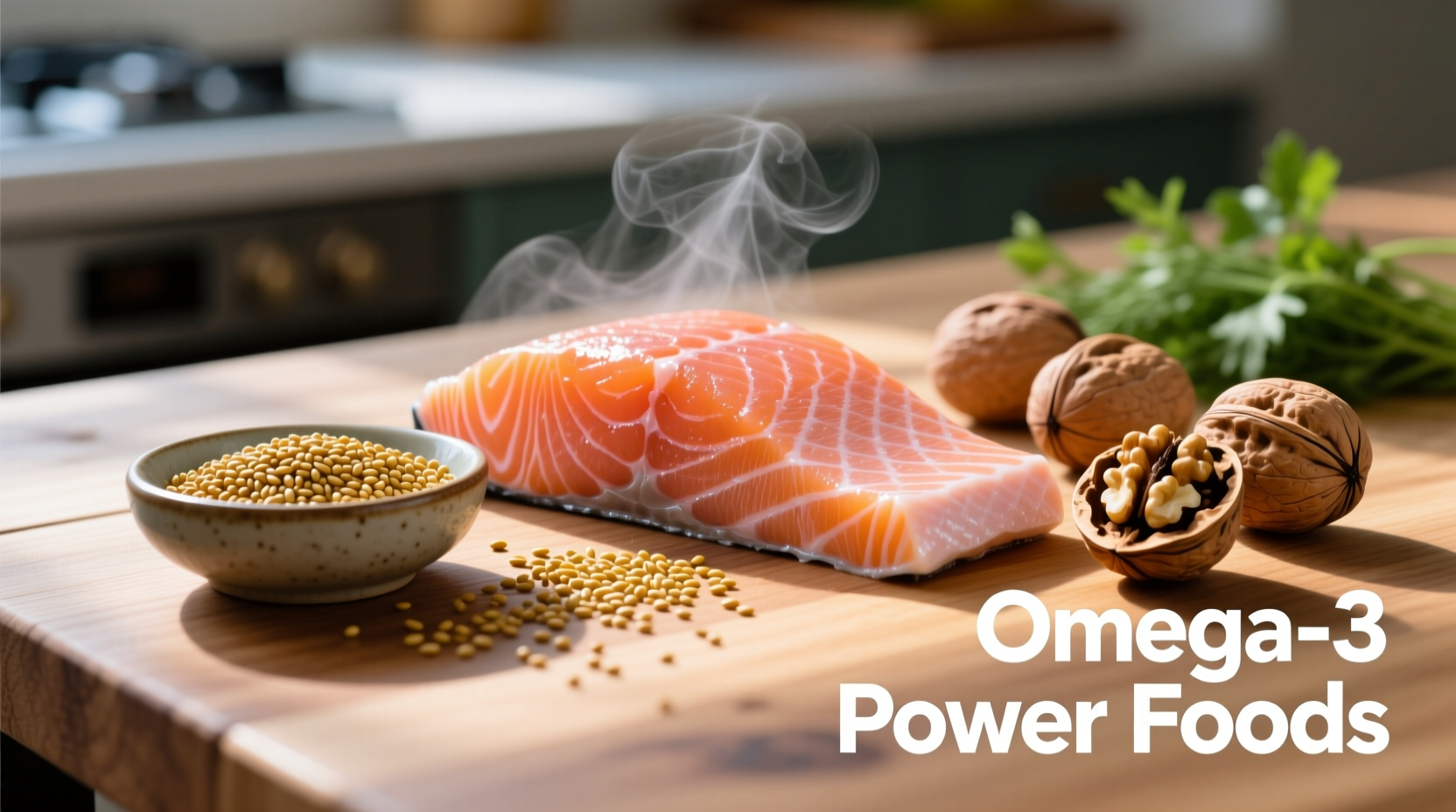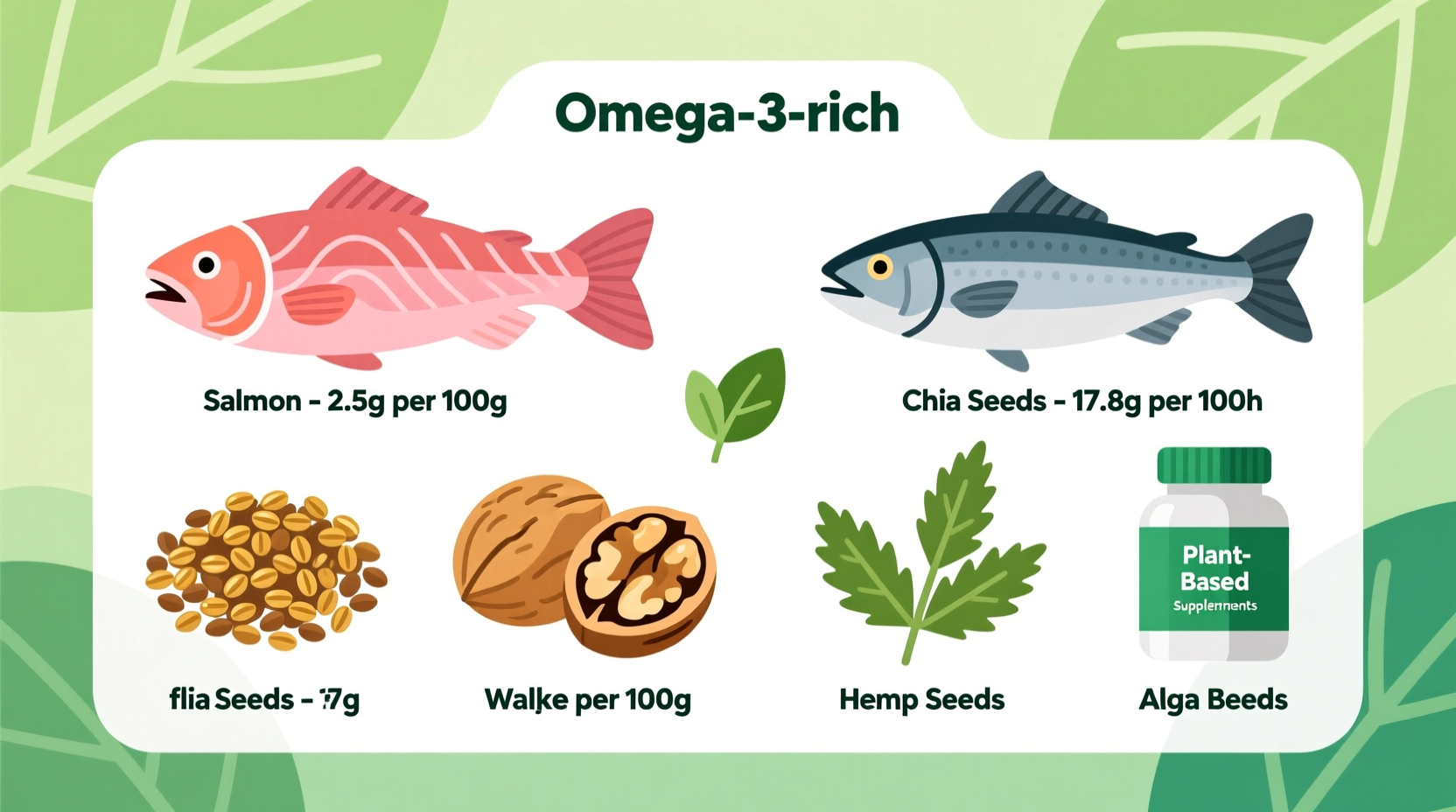Why Omega-3s Matter for Your Health
Omega-3 fatty acids aren't just another nutrient—they're essential building blocks your body can't produce on its own. These polyunsaturated fats play critical roles in brain function, reducing inflammation, and supporting cardiovascular health. According to the National Institutes of Health, adequate omega-3 intake is associated with lower risk of heart disease, improved cognitive function, and better management of inflammatory conditions.
Your Complete Guide to Omega-3 Food Sources
Understanding which foods deliver the most omega-3s helps you make strategic dietary choices. Omega-3s come in three primary forms: EPA and DHA (found mainly in marine sources) and ALA (found in plant sources). Your body converts ALA to EPA and DHA inefficiently, making direct sources of EPA and DHA particularly valuable.
Fatty Fish: The Premium Omega-3 Powerhouses
Fatty fish represent the most concentrated natural sources of EPA and DHA omega-3s. These cold-water species accumulate omega-3s through their marine food chain. Regular consumption provides immediate benefits without requiring metabolic conversion.
| Food Source | Serving Size | EPA+DHA Omega-3 Content |
|---|---|---|
| Mackerel (Atlantic) | 3 ounces cooked | 1.0-1.9 grams |
| Salmon (wild-caught) | 3 ounces cooked | 1.2-1.8 grams |
| Sardines (canned in oil) | 3 ounces | 1.0-1.5 grams |
| Herring | 3 ounces cooked | 0.9-1.5 grams |
| Anchovies | 2 ounces canned | 0.8-1.4 grams |
Data sourced from the USDA FoodData Central database (2023 update). Wild-caught fish generally contain higher omega-3 levels than farm-raised varieties, though both remain excellent sources.
Plant-Based Omega-3 Sources for Vegetarians and Vegans
For those following plant-based diets, several foods provide alpha-linolenic acid (ALA), which your body can partially convert to EPA and DHA. While conversion rates vary (typically 5-10% for EPA and less than 5% for DHA), these foods remain valuable omega-3 contributors.

Optimizing Omega-3 Absorption in Your Diet
Simply consuming omega-3 rich foods isn't enough—you need to maximize absorption. Research from the American Heart Association shows these practical strategies:
- Pair plant-based sources with healthy fats: ALA absorption increases when consumed with monounsaturated fats like olive oil
- Avoid excessive omega-6 intake: Maintain a balanced omega-6 to omega-3 ratio (ideally 4:1 or lower) by reducing processed vegetable oils
- Store seeds properly: Grind flaxseeds fresh and store in airtight containers to prevent oxidation
- Choose quality fish: Opt for wild-caught options when possible and check sustainability certifications
Special Considerations for Different Dietary Needs
Omega-3 requirements vary based on individual health circumstances. The Harvard T.H. Chan School of Public Health notes these important considerations:
| Dietary Situation | Recommended Omega-3 Strategy | Weekly Target |
|---|---|---|
| General health maintenance | 2 servings fatty fish + plant sources | 500mg EPA+DHA daily |
| Cardiovascular concerns | 3+ servings fatty fish + algae supplements | 1,000mg EPA+DHA daily |
| Vegan or vegetarian | Daily ALA sources + algae oil supplement | 2.2g ALA + 250mg DHA supplement |
| Pregnancy and breastfeeding | Low-mercury fish + prenatal supplement | 300mg DHA daily minimum |
Common Omega-3 Myths Debunked
Nutrition misinformation spreads quickly. Let's clarify some persistent omega-3 misconceptions:
- Myth: All fish oil supplements are equally effective
Fact: Quality varies significantly—look for molecularly distilled products with third-party purity verification - Myth: Plant-based omega-3s provide equivalent benefits to marine sources
Fact: Conversion rates from ALA to EPA/DHA are low, especially in men (under 5%) - Myth: You need expensive supplements to get enough omega-3s
Fact: Strategic food choices can meet requirements for most people without supplementation
Practical Meal Planning with Omega-3 Rich Foods
Incorporating omega-3s into your daily routine doesn't require dramatic changes. Try these chef-tested strategies:
- Breakfast boost: Add 1 tablespoon ground flaxseed to your morning smoothie or oatmeal
- Lunch transformation: Top salads with 2 tablespoons of hemp seeds or walnuts
- Dinner solution: Bake salmon with lemon and herbs for a 20-minute heart-healthy meal
- Snack smart: Keep roasted seaweed snacks or a small handful of walnuts handy
Remember that freshness matters—omega-3s oxidize easily. Purchase fish the day you plan to cook it, store seeds in the refrigerator, and check supplement expiration dates carefully.











 浙公网安备
33010002000092号
浙公网安备
33010002000092号 浙B2-20120091-4
浙B2-20120091-4